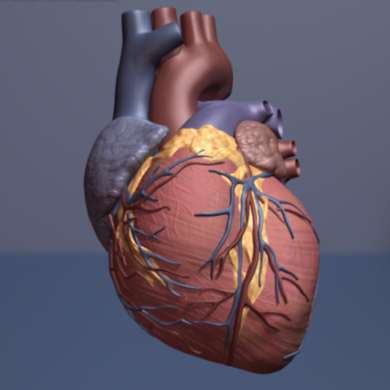Human heart. Credit: copyright American Heart Association
During late stages of heart development, interactions between the endocardium (the inner layer of cells) and the myocardium (the heart muscle) are known to be crucial. Signaling between these two cell layers during the earliest stages of heart development has been more difficult to study.
Now, H. Scott Baldwin, MD, and colleagues have generated a model to explore endocardial-myocardial interactions in vitro. They found that eliminating endocardial cells reduced the number of contracting myocardial cells and the expression of myocardial-specific genes. Addition of the growth factor Bmp2 partially rescued myocardial cell maturation and function.
The studies, reported in the journal Development, provide direct evidence of a role for the endocardium during early heart muscle development and could guide stem cell-based therapies for generating myocardium.
The findings also point to the possibility that altered endocardial-myocardial interactions during early development may contribute to congenital heart defects, which occur in nearly 1% of live births and remain the leading cause of death due to birth defects.
More information: Leshana Saint-Jean et al. Myocardial differentiation is dependent upon endocardial signaling during early cardiogenesis in vitro, Development (2019). DOI: 10.1242/dev.172619
Journal information: Development
Provided by Vanderbilt University






















